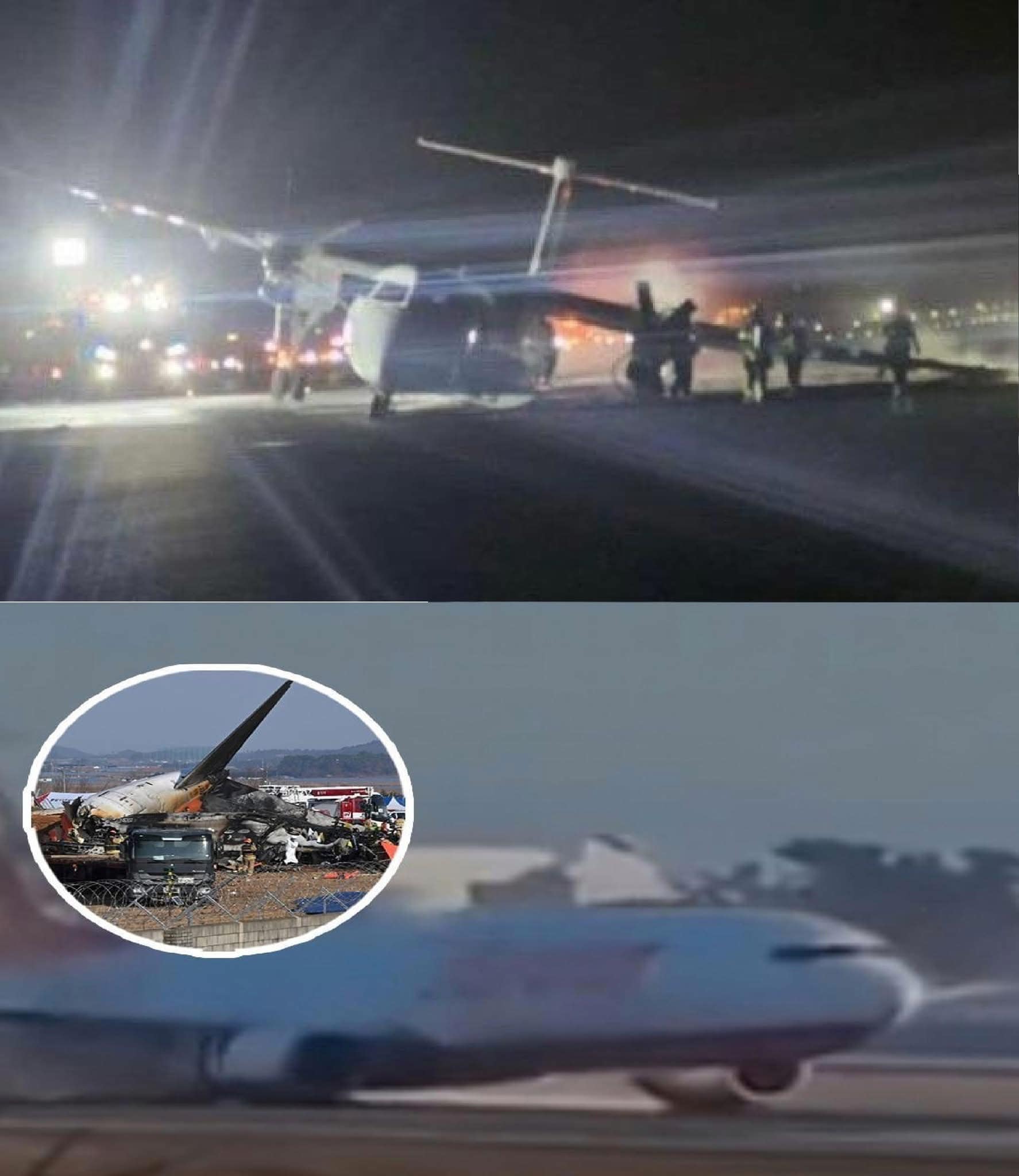Multiple Aviation Emergencies Raise Global Concerns
On December 28, 2024, Air Canada Express Flight 2259, operated by PAL Airlines, faced a terrifying ordeal upon arrival at Halifax Stanfield International Airport in Nova Scotia. The aircraft, a De Havilland Dash 8-400, was completing its journey from St. John’s, Newfoundland and Labrador, when its left main landing gear collapsed during landing. This mechanical failure caused the left wing to scrape along the runway, igniting a fire that filled the cabin with smoke and panic.
Fortunately, all 73 passengers and crew members were safely evacuated, and no injuries were reported. Emergency response teams acted swiftly to extinguish the flames, and airport operations were temporarily suspended to ensure the situation was managed effectively. Passenger Nikki Valentine described the terrifying sequence of events, explaining how the plane tilted sharply to the left, leading to a loud crash as the wing struck the pavement. The collision caused visible flames, and smoke began entering the cabin, adding to the passengers’ distress.
This incident, while alarming, was just one of several aviation emergencies reported on the same day, a troubling trend that has raised concerns across the industry.
KLM Flight in Norway Encounters Hydraulic Failure
In another close call, a KLM Royal Dutch Airlines Boeing 737-800 experienced a hydraulic system failure shortly after taking off from Oslo, Norway. The crew declared an emergency and managed to divert the plane to Sandefjord Torp Airport for an emergency landing. While the aircraft skidded off the runway into a grassy area, all passengers and crew members escaped unharmed. The quick thinking of the flight crew and the efficiency of emergency responders prevented what could have been a more serious incident.
Deadly Crash in South Korea
Tragically, the day’s most devastating aviation event occurred in South Korea. A Jeju Air Boeing 737-800 suffered a catastrophic landing gear failure during its approach to Muan International Airport. The malfunction resulted in the plane crashing on the runway and erupting into a massive fire. Despite the efforts of rescue teams, the crash claimed the lives of at least 179 passengers, marking one of the deadliest aviation disasters in South Korea in recent memory. The incident has sent shockwaves through the global aviation community, highlighting the potentially fatal consequences of mechanical failures.
Growing Concerns in the Aviation Industry
The series of emergencies on the same day has prompted heightened scrutiny within the aviation industry. Experts and authorities are now calling for comprehensive investigations into these incidents to identify commonalities, if any, and to address potential systemic issues. The Transportation Safety Board of Canada has launched a thorough inquiry into the Air Canada Express Flight 2259 incident, while similar investigations are underway for the KLM and Jeju Air cases.
Mechanical failures, though rare, pose a significant risk to air travel. The aviation industry prides itself on maintaining high safety standards, but these incidents serve as a sobering reminder of the importance of rigorous maintenance, timely inspections, and adherence to safety protocols.
Passenger Reactions and Industry Response
Passengers and industry professionals alike have expressed both relief and concern. While many are grateful for the successful evacuations in Halifax and Norway, the tragedy in South Korea underscores the dire need for enhanced safety measures. Passengers who survived the Air Canada Express landing, like Nikki Valentine, are left shaken but thankful for the swift actions of the crew and emergency responders.
Aviation authorities across the globe are likely to increase inspections and reevaluate procedures to prevent similar occurrences in the future. Airlines are also expected to invest in more advanced monitoring systems to detect potential issues before they escalate into emergencies.
A Call for Reassurance
As investigations unfold, the global aviation community faces the challenge of restoring public confidence. Air travel remains one of the safest modes of transportation, with millions of flights operating without incident each year. However, the clustering of these emergencies serves as a stark reminder of the need for vigilance, innovation, and unwavering commitment to passenger safety.
The incidents of December 28, 2024, will undoubtedly shape future policies and practices in aviation, ensuring that lessons learned translate into tangible improvements for travelers worldwide.

Sophia Rivers is an experienced News Content Editor with a sharp eye for detail and a passion for delivering accurate and engaging news stories. At TheArchivists, she specializes in curating, editing, and presenting news content that informs and resonates with a global audience.
Sophia holds a degree in Journalism from the University of Toronto, where she developed her skills in news reporting, media ethics, and digital journalism. Her expertise lies in identifying key stories, crafting compelling narratives, and ensuring journalistic integrity in every piece she edits.
Known for her precision and dedication to the truth, Sophia thrives in the fast-paced world of news editing. At TheArchivists, she focuses on producing high-quality news content that keeps readers informed while maintaining a balanced and insightful perspective.
With a commitment to delivering impactful journalism, Sophia is passionate about bringing clarity to complex issues and amplifying voices that matter. Her work reflects her belief in the power of news to shape conversations and inspire change.
